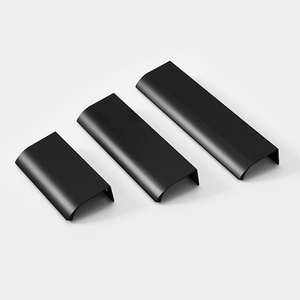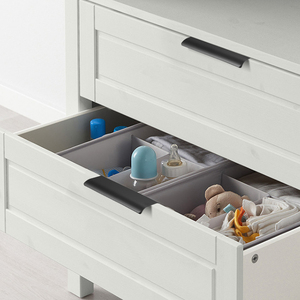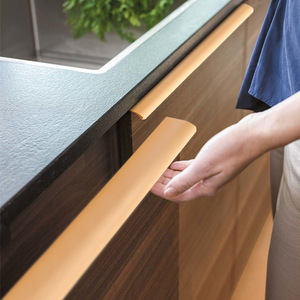
All categories
Featured selections
Trade Assurance
Buyer Central
Help Center
Get the app
Become a supplier

(3251 products available)



































The materials of a Handle Tool set vary greatly depending on the complexity of their production. The most common materials, however, are:
Polypropylene
Polypropylene is widely utilized in injection molding due to its flexibility, strength, and resistance to various chemicals. It is also a lightweight material that will not put much pressure on the handle. Its non-toxic nature and ability to be molded into precise shapes make it a preferred choice for manufacturers. Therefore, tools that require durability and ergonomic handles, such as pliers, hammers, and screwdrivers, are often found to have handles made of polypropylene.
Thermoplastic elastomers (TPE)
Thermoplastic elastomers are rubber-like polymers that combine the best properties of rubber and plastic. These materials are especially useful for tool handles demanding flexibility, cushioning, and a non-slip grip. TPEs come in diverse hardness levels and can be molded into comfortable shapes for the users' hands. Common applications are found in power tools, and these materials are most suitable for giving resistances to extremes of temperatures and many types of solvents.
Polyvinyl chloride (PVC)
Polyvinyl chloride is known for its versatility and rigidity. It is also resistant to abrasion and can be molded into variegated shapes. In tool handle molding, PVC is commonly applied in plumbing tools, electrical devices, and insulation as it has good dielectric properties. Its durability and ability to withstand most environmental conditions make it very suitable for outdoor and industrial tools.
Polycarbonate
Polycarbonate is a strong, impact-resistant thermoplastic used where toughness and temperature resistance are critical. It is popularly recognized for its clarity and can offer a comfortable, ergonomic shape when polished. Such properties make polycarbonate ideal for safety tools such as heat- or impact-resistant glasses. Moreover, its capacity to be combined with other materials for hybrid handles enhances its applications even more.
Nylon
Nylon, a synthetic polymer, is often used in tool handle molding due to its strength, rigidity, and resistance to wear. It's a lightweight material, and a molded product made from it can maintain structural integrity even under stress. Since nylon is resistant to many chemicals, hence it is ideal for application in the automotive and industrial sections, where exposure to oils and other chemicals is frequent.
A handle tool set can be customized in several options. They include:
Material selection
Material selection is a key factor in customization, and it has to do with the properties a tool will possess and the impact it will have on a user's experience. Usually, diverse materials such as thermoplastics, rubber-like thermoplastic elastomers, and polypropylene are used for handle manufacturing due to their durability, flexibility, and resistance to chemicals. There are multiple degrees of thickness in which these handles can be made to give ergonomic beauty and enhance gripping. These cosmetic properties also include colors and textures that align with brand images or user preferences.
Shape and design
The shapes of handles are, to a large extent, customizable. The options are from simple cylindrical shapes to more complex, contoured designs that fit the hand better. Advanced computer-aided design (CAD) software is applied to create precise models that ensure optimum comfort and usability. Manufacturers also offer options to add finger grooves, soft pads, or other features that improve grip to suit specific applications.
Injection molding
Injection molding is the most basic production process for the mass production of identical parts. Its high efficiency makes it very appropriate for large production runs. Since the molding process allows a high level of precision and consistency, it also means that a large number of parts will come out with the same attributes. This is what makes injection molding the most suitable process for manufacturing tool handles that need to be highly replicable.
Thermoplastics
Thermoplastics are famous for being heated and shaped multiple times without losing their properties. This makes them ideal for handles requiring flexibility, such as wrench sets. Materials like polypropylene and polycarbonate can be processed to form lightweight yet very strong handles. These thermoplastics also provide a degree of environmental protection to the handles, preventing them from degrading due to moisture exposure.
Thermosetting plastics
On the other hand, thermosetting plastics are plastics that will harden irreversibly when heated. These plastics are suitable for injection molding since they can be shaped and fixed in a mold, thus forming very durable handles like screwdrivers. Their chemical resistance is very useful for tools that often encounter harsh substances or extreme workloads.
Soft-touch coatings
Soft-touch coatings are additional adjustable features. These coatings give extra comfort and gripping ability, thus reducing slippage during usage. That is why they are frequently applied in power tools that are a category under heavy-duty usage. Soft-touch coatings also give a handle a different, more appealing look, enhancing its aesthetic value and purpose.
Automotive repair tools
Tool handle molding serves a great purpose in the automotive repair initiatives. It is done by giving an identity to handles that are durable and give a proper grip to the underlying tool, hence improving their functionality and reliability. For example, molded handles in wrenches, sockets, and screwdrivers provide comfort during long hours of repairs, thus reducing user fatigue.
Construction and carpentry tools
For construction and carpentry tools, handle molding provides a significant amount of durability to the tools. Here, molded handles resist moisture and wear, making them practical for use in tough outdoor and indoor working conditions. Molding also allows for more ergonomic designs, which, after all, is very important for workers wielding hammers, chisels, and saws for extended periods.
Gardening and landscaping tools
In gardening and landscaping tools, which include handle tool sets, handle molding is extensively used to increase the lifetime of the production tools. Because of this, it is possible to use lightweight, non-slip designs that reduce fatigue when used for digging, pruning, or planting. Besides, well-designed molded handles are resistant to rust, giving normal maintenance and, hence, longevity.
Household and maintenance tools
Household tools such as molded handles for screwdrivers, pliers, and pruning shears are common in every tool. Molding makes these handles very comfortable and easy to grip, which is crucial when performing household chores or caring for tools. In addition, the molded handles are extremely durable and can resist most chemical and environmental attacks, hence extending lifecycle estimation.
Manufacturing and assembly line tools
In industries and assembly lines, tools with molded handles are indispensable. They have to be designed to be very durable and support many usages, which is why they have a production design. A well-constructed handle enables workers to operate efficiently with less strain on their hands. Furthermore, specific mold designs allow distinct applications.
Type of tool
The kind of tool in handling needs will primarily depend on the tool's purpose and usage. For example, heavy-duty industrial tools, such as metal cutting tools and power equipment, require robust, high-density molded materials to ensure their handles are impact- and fatigue-resistant. On the other hand, lightweight home or garden tools may only be required to have handles made of less weighty, strain-resistant materials that are ergonomically designed so that they do not cause fatigue after prolonged use.
Material
A material, which is probably the most important of all the factors, will determine a molded handle's strength, durability, and flexibility. It is a common practice for handles to be made from polypropylene, nylon, and polycarbonate, as they do withstand elongation without permanently deforming, in addition to resistance to chemicals and environmental degradation. A good material will have a better density-to-weight ratio so that the final product will be convenient to use but tough enough to resist wear and tear.
Design
In what follows, the design of the handle must be attractive and comfortable to the prospective client or user. That is why ergonomic design has to consider the shape, size, and grip type, therefore reducing operator fatigue and improving control. Henceforth, advanced computer-aided design technologies assist in producing molds with precise details that optimize functionality and aesthetics alike.
Manufacturing process
Which manufacturing method to use will largely depend on the volume and complexity of the product demanded, as well as the budget. Injection molding, for example, is very crucial in high-volume production, where uniformity will be critical, while hand molding may prove essential in low runs, especially when prototypes are in the making. Every method available offers unique advantages concerning flexibility and precision, thus requiring careful consideration when deciding on the best one.
Regulatory compliance
Last but certainly not least is regulatory compliance. There are several industries where health and safety standards and regulations have to be met, and this is normally applied to the materials used, especially in tools with exclusive human contact. Therefore, aware of these regulations, one can judge whether a particular material or design is more useful and viable for specific applications.
A1: Generally, materials are molded using durable and ergonomic materials like thermoplastics (polypropylene and polycarbonate), nylon, thermosetting plastics (like phenolic). Other materials are thermoplastic elastomers with rubber-like properties and soft-touch finishes, greatly improving comfort and grip.
A2: Molding forms handles that are accurate, consistent, and stronger than machined or assembled parts. It helps integrate design features such as anti-slip and shock absorption, which also helps resist environmental elements, increasing durability.
A3: Injection molding is the main process behind mass-producing molded handles. It enables the production of complex, consistent designs quickly and efficiently. This is very applicable for large production necessities, where uniformity is said to be crucial.
A4: Yes, there are a growing number of eco-friendly materials such as bioplastics derived from renewable resources are increasingly used. Also, recycled thermoplastics offer sustainable alternatives without compromising performance.
A5. Thermosetting plastics are suitable for tool handles because they provide rigid, high-temperature-resistant, and chemical-resistant handles. Once molded, they offer durable, long-lasting finishes, making them ideal for heavy-duty tools.